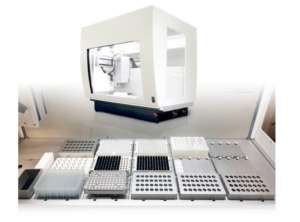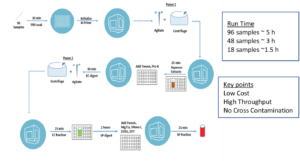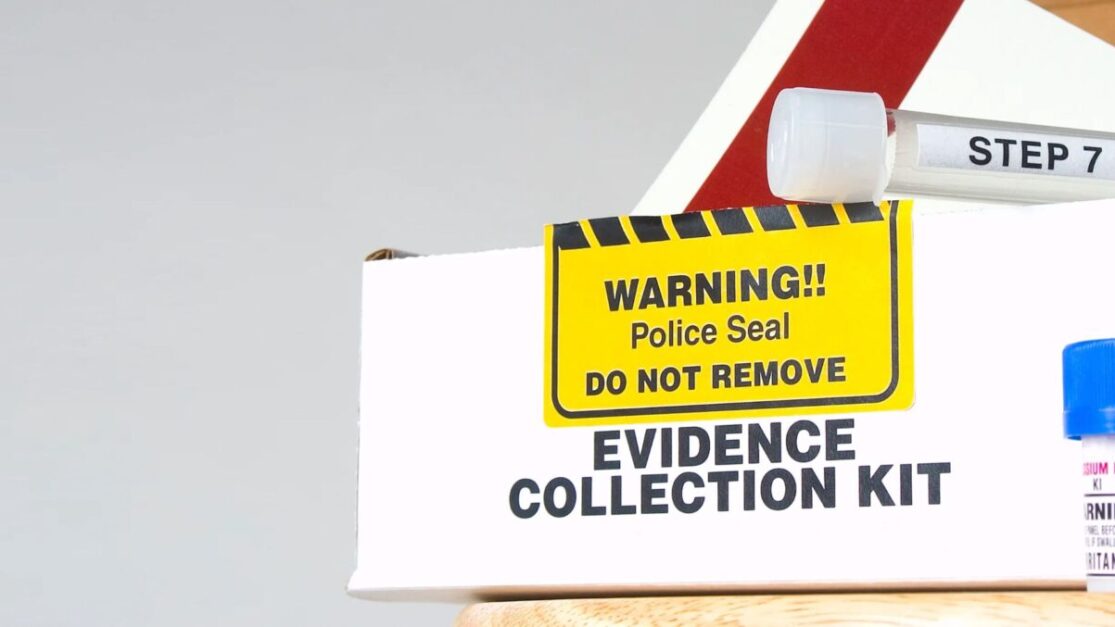In forensic sciences, the accurate separation of sperm from non-sperm cells in sexual assault evidence samples is a crucial step in gathering incriminating DNA evidence. Traditionally, this process, known as differential digestion, has been a laborious and time-consuming procedure. As forensic laboratories faced increased public and legislative demands for timely examination of sexual assault evidence samples, automated liquid handling workstations were implemented to meet the demand. Recent developments have sparked interest within the forensic community and promised automated approach that utilizes selective degradation with DNase I.
The Backlog Problem:
Sexual assault cases often require meticulous evidence collection, involving a range of samples such as DNA swabs, clothing, and other biological materials. The manual processing of these procedures is time-consuming, labor-intensive, and prone to human errors, resulting in significant backlogs in forensic laboratories. This backlog delays justice and adds emotional stress to survivors who deserve a timely resolution to their cases.
The Power of Selective Degradation & Automation:
The present study introduces a selective degradation method as an innovative approach involving the application of a degradative agent to specifically target and eliminate non-sperm DNA from mixed samples. This technique involves using an agent to degrade any residual non-sperm cell DNA in the sperm fraction after lysis, leaving the unlysed sperm cells unaffected. Selective degradation eliminates the need for multiple centrifugation and wash steps, making it suitable for automation. The use of DNase I as the degradative agent has shown promise. This breakthrough opens the door to automation, allowing for a more streamlined and efficient differential digestion process. Forensic scientists can focus on other critical aspects of their investigations by saving time and labor.
In response to the forensic science community’s interest, Aurora Biomed have developed an automated liquid handling workstation, VERSA 1100 for differential digestion protocol using DNase I. This cutting-edge technique employs 96-well plates and incorporates microscope slide preparations, creating a high-throughput system with exceptional efficiency.

Challenges and Initial Evaluations:
Researchers encountered challenges in maintaining DNA yield and STR DNA typing quality compared to the conventional differential digestion method. However, these initial evaluations demonstrated invaluable, paving the way for further improvements.
To address these challenges, the focus of researchers was on optimizing the concentrations of divalent ions magnesium and calcium, and the quantity of DNase used. These adjustments led to a significant increase in both the DNA yield and the quality of the STR DNA typing results. The improved outcomes demonstrate the potential of the automated differential digestion protocol.
Sample Flexibility:
A critical aspect of any forensic technique is its ability to handle samples stored for extended periods or exposed to harsh conditions. To evaluate the robustness of the automated differential digestion protocol, the researchers tested it on samples stored for up to 60 years and samples subjected to multiple freeze/thaw cycles, heat, and humidity. The method consistently produced accurate results, similar to those obtained through the conventional differential digestion approach.
Differential Digestion Workflow:

Benefits of Automation:
Speed and Efficiency: Automated liquid handling workstations can process multiple samples simultaneously, dramatically reducing the time required for evidence analysis. This enhanced efficiency enables forensic teams to tackle backlogs more effectively and provide timely results to law enforcement agencies and the judiciary.
Reproducibility: Automation ensures consistent and uniform evidence processing, minimizing the chances of errors and contamination. Reproducibility is crucial in maintaining the integrity of the evidence and increasing its admissibility in court.
Enhanced Accuracy: Liquid handler workstations can precisely measure and transfer minuscule amounts of liquids, leading to more accurate results in DNA analysis and other forensic tests. The improved accuracy can strengthen the case’s evidentiary value and aid in identifying perpetrators.
Staff Resource Allocation: Forensic laboratories can optimize staff resources by automating the labor-intensive aspects of evidence processing. Analysts can focus on higher-level tasks, data interpretation, and investigative support, further expediting the overall process.
Conclusion:
The advent of the automated differential digestion protocol using selective degradation with DNase I marks a significant milestone in the field of forensic science and presents a game-changing solution to combat the backlog problem in forensic laboratories. By automating the separation of sperm from non-sperm cells, this innovative technique saves time, reduces labor, and enhances the efficiency of evidence processing. The optimized protocol overcomes initial challenges, ensuring a higher DNA yield and superior STR DNA typing quality. Moreover, its resilience in handling samples stored for extended periods or exposed to adverse conditions reaffirms its potential as a reliable method for the forensic examination of sexual assault evidence. As technology advances, the forensic science community can look forward to more sophisticated and effective tools that aid in the pursuit of justice and the protection of survivors.



